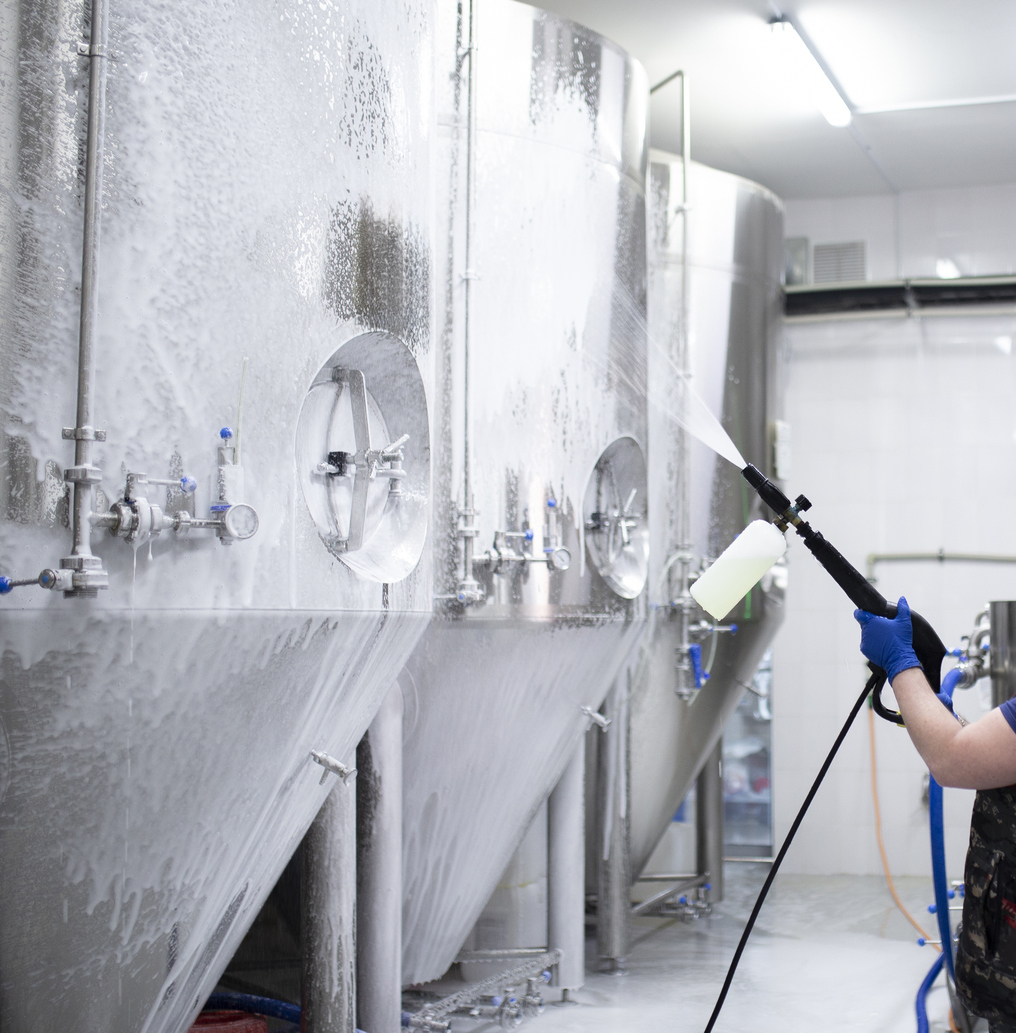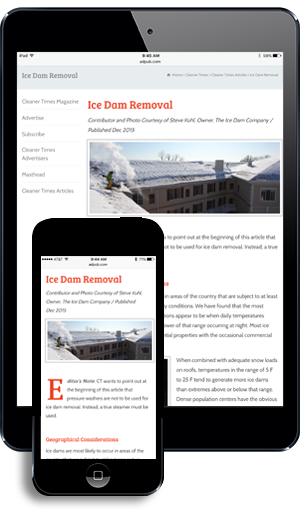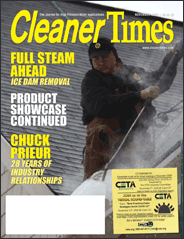
Affordable Smarter Workers
by Mark E. Battersby | Published October 2025

Given all that is going on today, many within the pressure washing industry are struggling to cope with a shortage of qualified job applicants and skilled workers. Fortunately, this problem—and a smarter work force—can be achieved with the help of federal and state programs, agencies, and organizations. Related costs can be reduced with tax deductions and credits—all unlikely to be impacted by any changes. Every pressure washing business needs qualified workers. Obviously, new hires can be trained, usually with the cost offset with tax deductions or tax credits for hiring from select groups. There are also a number of programs designed to train people, often to meet the needs of a particular business or industry. PRE-TRAINED Having someone else train job applicants to meet a business’s hiring requirements at no cost is possible thanks to a number of government programs at both the state and federal level. At the federal level are programs created to provide workers that meet specific industry needs such as the following: * The Workforce Innovation and Opportunities Act (WIOA) is a federal law that provides funding and guidance to states for workforce development programs. * The H-1B Workforce Grant Program focuses on innovative workforce challenges, forging public-private partnerships between industry, education, and workforce systems–at least according to the U.S. Department of Labor (DOL). * The DOL’s Employment and Training Administration (ETA) offers various grants for skills training, including those focused on critical sectors, community colleges, and rural communities. * The Registered Apprenticeship Program offers structured on-the-job training combined with classroom instruction, helping business develop a skilled workforce and improve employee retention. Most of these and other similar programs are administered by state employment services or, in many cases, by an independent agency. The common goal of these programs is helping employers find applicants, often training them, and with at least one program, footing a sizeable portion of the wages of workers hired from within select groups.
WOTC
Uncle Sam, in the form of the IRS and the Department of Labor (DOL), want to help businesses reduce their labor costs. The Work Opportunity Tax Credit (WOTC) is a federal tax credit available to employers that hire individuals from groups that have consistently faced significant barriers to employment. Best of all, the WOTC is a tax credit that, unlike a deduction from taxable income, directly reduces the annual tax bill. In other words, the WOTC is a direct, dollar-for-dollar write-off and it isn’t chicken feed. In general, the WOTC equals up to 40 percent of up to $4,000 in wages paid to or incurred on behalf of an individual who * Is in their first year of employment * Is certified as being a member of a targeted group, and * Performs at least 400 hours of service for the pressure cleaning operation. That generally works out to a maximum tax credit of $2,400. Lower tax credits are available for hiring qualified individuals who perform less than full-time work for the pressure washing operation. For disabled veterans, the credit may be available for the first $24,000 of wages or up to $9,600 per worker. And, once again, the tax credit, unlike a tax deduction, offsets the employer’s final tax bill. Unfortunately, the WOTC is “non-refundable,” meaning the employer must have a so-called tax “liability” against which to use the credit. However, a pressure-washing business without a tax bill can carry the current year’s unused WOTC back one year and then forward for up to 20 years. Remember, though, that unless extended, the WOTC expires after December 31, 2025.
ON-THE-JOB TRAINING
Acquiring the skilled workforce needed to enhance productivity, improve the quality of work, and/or deliver better customer service remains difficult. Since a pressure-washing business is often better qualified to train future employees, one possible solution might involve investing in an apprenticeship program. An informal apprenticeship program or on-the-job training is always an option. A pressure cleaning business may deduct the cost of “ordinary and necessary” expenses paid for employee education and training—even amounts paid to others. It should also be noted that the cost of education for the pressure cleaning contractor or business owner is tax deductible. The education or training must “maintain or improve skills required in the trade or business,” or the education must be required by law or regulations for maintaining a license, status, or job. Obviously, apprenticeship programs can come in a variety of forms, formal and informal. A formal program is one usually offered with the help of state, local, or trade organizations. Equipment manufacturers and distributors often offer similar programs that combine paid, on-the-job training with classroom instruction. There are a number of benefits a pressure washing business can provide its employees, benefits which are not taxable to them but are deductible by the business. The first and easiest is for the business to pay for educational courses that maintain or increase an employee’s existing skills. This can mean paying for an Excel course for a secretary or bookkeeper. The course must fall under the condition of a “working condition fringe benefit,” and there should be a written plan, which doesn’t have to be formal. It is important that the course is related to the employee’s current employment and is something that won’t help qualify the employee for a new job or trade.
BASIC SMARTS
Every pressure cleaning business can claim a deduction for the cost of training and supplies for an apprentice. So long as the expenses are ordinary and necessary business expenses, the cost of providing training, tools, equipment, uniforms, and other supplies to an apprentice are legitimate tax deductions. If the apprentice is enrolled in a qualified apprenticeship program that meets certain criteria, such as being registered with the Department of Labor or state agency, a tax credit might be available to reduce the operation’s tax bill. A key question is whether the education-related benefits paid by the employer are deductible from the employer’s business taxes and, probably even more important, whether the benefits are taxable to the employee. Providing educational assistance such as tuition reimbursements to both new hires and current employees is another often economical option. Educational assistance can be tax-free as a working condition fringe benefit if it’s for education that the employee could deduct as a business expense had they paid for it themselves. For employers, the amount paid or reimbursed for an employee’s education expenses is a tax-deductible business expense. As an added bonus, if the educational expenses qualify, employees may be able to exclude the payment or reimbursement from their gross income as a working condition fringe benefit. The drawbacks to tuition reimbursements are that they often require the employer to have a written plan, and the benefits must be nondiscriminatory. In other words, the pressure cleaning business must ensure that owners, shareholders, or highly compensated employees aren’t favored. It also only covers payments made before January 1, 2026, unless extended by future legislation.
MAKING IT A PLAN
Tax-free educational assistance benefits under the tax law’s Section 127, federal Educational Assistance Program, include payments for tuition, fees, and similar expenses as well as books, supplies, and equipment. Unlike other education expense reimbursements or benefits, the payments do not have to be for work-related courses. Plans can be either for undergraduate or graduate-level courses. Section 127 allows the pressure cleaning business to give each participating employee up to $5,250 in annual tax-free educational expense reimbursement. That amount is deductible by the employer and not taxable to the employee. Under Section 127, the total amount that an employee can exclude from gross income for payments of principal or interest on qualified education loans and other educational assistance combined is $5,250 per calendar year. If an employee seeks reimbursement for expenses incurred, the expenses must be paid by the employee in the same calendar year for which reimbursement is made by the employer. Qualified education loans may be incurred by the employee in prior calendar years and prior to employment, and payments of principal and interest may be made by the employer in a subsequent year. But, the employing business can deduct the expense of operating a section 127 plan as a business expense without owing any federal payroll taxes. The IRS has provided a form that can be adopted by any employer: https://www.irs.gov/pub/irs-pdf/p5993.pdf
SMARTER WORKERS = MORE PROFITS
Finding qualified job applicants and investing in employee education should be an important part of every pressure washing operation’s plans. With smarter workers, everyone benefits. The operation prospers with smarter, better-trained employees -– and a tax deduction when the business foots the bill for employee education or training costs. Naturally, the deductions are limited. The cost of attending workshops, conferences, trade shows, and other expenses that help employees expand their knowledge of subjects directly related to the pressure-washing operation are also tax deductible. After ensuring the operation can afford the path chosen for better qualified job applicants and a smarter work force seeking government and non-government programs, tax deductions and unique write-offs abound. Naturally, seeking direction from knowledgeable professionals can help.





